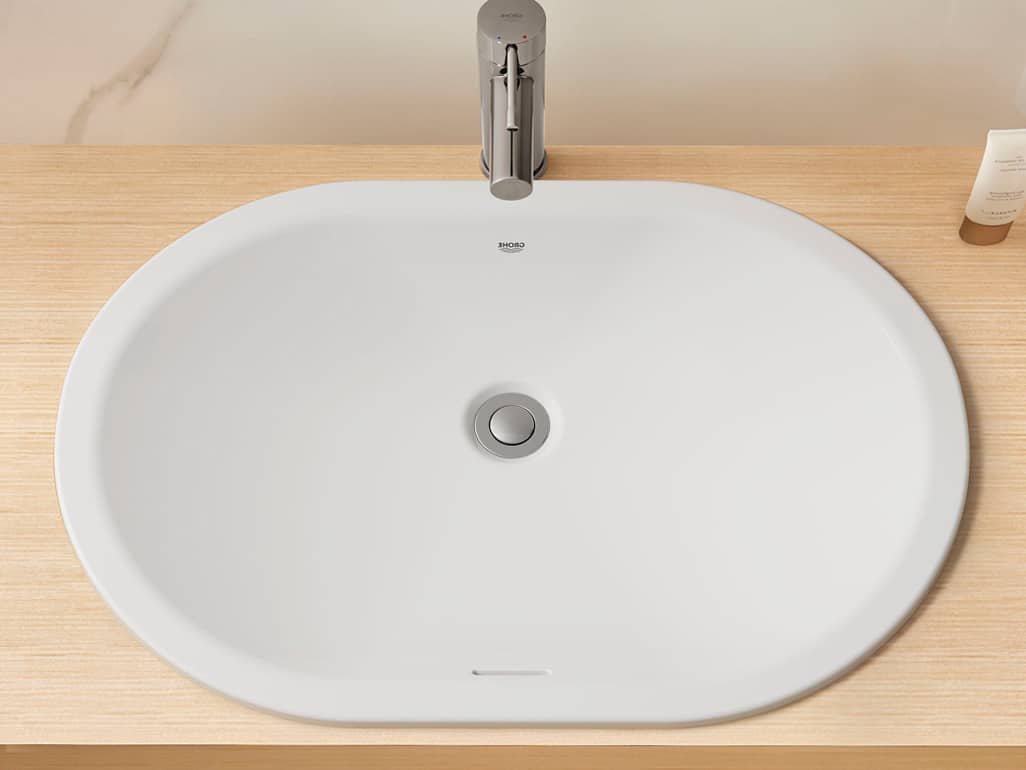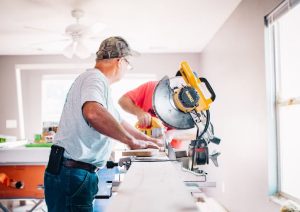Ever had a chance to see a black pad under your sink? Confused about what it is? Ever wondered what its use was? Is it something necessary? Well! Look no further because we’re here to put all of your superstitious fears and questions to rest!
People have questioned the use of a mysterious black pad after witnessing its existence under the sink, whether by chance or intentionally. Some even went as far as to question their safety and if it is something that will lead to their death.
(Talk about paranoia). No, I’m not exaggerating, those were genuine concerns that even left me befuddled. Now, WHAT IS it you ask? Drum roll, please!
It is a…. NOISE-DAMPENING PAD! Yes! You read it right! A noise-dampening pad. Also known as an Acoustic pad or a sound absorption pad. An undercoating is applied to the underside of the kitchen and OVER the sound-absorbing pad which is fitted to the sink. The undercoating is often black thus explaining the pad’s color.

Use and purpose of the black pad
You don’t need big brains to know what the use of the Acoustic pads is. As mentioned above, they are called noise-dampening pads meaning that their main and only function is to absorb sounds or dampen the noise made by the cluttering of dishes and other kitchen tools that are thrown into the sink, you wouldn’t wanna wake up or disturb the other members of your house after all.
Remember when you suddenly feel inspired to wash dirty dishes in the middle of the night but are in danger of a demon, a ghost, or a stray zombie hearing you? Then you don’t have to worry, this little pad is going to save your life (can’t say the same for your mental health though!) It will absorb the vibrations from the sink and even the noise the water makes going down the drain.
The material used for sink pads
Sink pads are made of bitumen which deadens the noise of water hitting the sink. Until 1992, the sink pads were made from Asbestos.
Why did they stop using Asbestos? Ironically, if the people asking questions about their deaths due to these pads were raising these very questions before 1992? Then their fear would have been valid.
Inhalation of air that contains Asbestos fibers, consuming asbestos, or even skin absorption can cause Asbestosis. You can live with it for years but not as long as you would have before contracting it.
Not laughing at those paranoid people now, are you?

So, it is safe to say that using asbestos for your sink pad is not advisable and not even your doctor will be able to help you.
Sound Proofing The Kitchen Sink using Sound Deadening Mat
Are you the type of person who would do all the handiwork around the house and not call a specialist unless it is completely out of your expertise?
Then keep reading! Because we’ll give you the necessary steps to install a sound-deadening mat! (Yes, I know! How very exciting) The sound-deadening mats used in cars might be perfect for your homemade kitchen soundproofing.
STEP 1
Measurements are a must when it comes to precise and fitting works. Especially here. Make the right-sized necessary cuts to the underside of the kitchen, where you’ll be installing the mat.
STEP 2
Clean and dry the underside and lay the sink upside down on a table or the floor.
STEP 3
Sound-deadening mats for cars normally have an adhesive backing but it doesn’t hurt to be too careful. Make sure that there is a cardboard protective layer between the sink and the table or floor so the adhesive spray doesn’t get on them. Use the 3M adhesive spray on the mat and the parts of the sink where you want to stick the mat.
STEP 4
Now, it is simply a waiting game. Allow the adhesive to set and your soundproof kitchen sink is ready.
If your sink is already installed then you can cut them into smaller pieces and apply them one by one.
Other Soundproofing Materials
Now you may be questioning if there are any other ways to soundproof your kitchen sink. And we, your ever-so-helpful Santa’s little helpers are happy to inform you that, yes! There are other ways.
Hold on to your kitchen sinks because we’re diving right into the soundproof tunnel! At least you won’t have to worry about someone hearing you scream.
You can use the following materials besides Sound deadening mats:
- Mass Loaded Vinyl
- Rubber Sheets
- Rubberized Undercoating Spray
Mass Loaded Vinyl
Vinyl is a more popular option as opposed to sound-deadening mats and is also more expensive but you don’t need a lot of it. You don’t need to cover the entire underside of the sink with it, you can leave the side portions.
It is flexible and yet has a lot of mass that helps dampen the noise made from the cluttering kitchen utensils and high-pressure water. It weighs quite a lot at one pound per square foot.
The installation procedure is similar to sound-deadening mats with a few minor differences.
Here are the steps for its application:
STEP 1
The first step is to measure and cut with a utility knife. The center part of the sink has a circular cut which is for the drain pipe to pass through.
STEP 2
Make sure it is clean and dry before applying the adhesive.
STEP 3
It’s time to apply the adhesive and the type of adhesive is important as well. The 3M Super 77 is a good type. But before applying, lay down the sink as described earlier. Now spray the adhesive and when ready, apply the mass-loaded vinyl carefully.
STEP 4
Allow the adhesive to set and…..DONE! One soundproof kitchen sink, Done!
Rubber Sheets
Another option besides sound-deadening mats and mass-loaded vinyl is Rubber Sheets.
The installation procedure is similar to mass-loaded vinyl.
Rubberized Undercoating Spray
This product is used to prevent corrosion of the vehicle parts such as parts of fenders and hoods. But you can also use it for the underside of your kitchen sink and much easier to do than then the other available options. Especially if your kitchen sink is already installed.
The application procedure is quite simple and there aren’t a lot of steps.
STEP 1
Take any old newspaper, roll it up and plug it into any gaps in the kitchen sink. This will stop any blockage problems from occurring after you’re done with the application.
STEP 2
To make sure the spray doesn’t ruin the wall or floor, take ANOTHER newspaper or cardboard in the spraying area and very close to the sink.
STEP 3
Make sure there is at least a distance of 6 inches between the can and the sink. Then proceed to spray.
STEP 4
Now just wait until the spray is set and remove the paper or cardboard AFTER the spray is done setting.
Hope that was informative and helpful! Good day to you and your sink!




